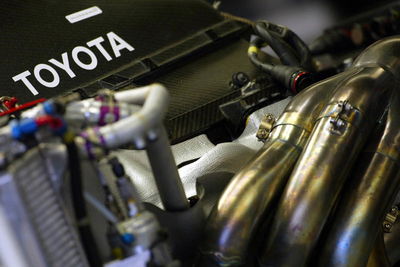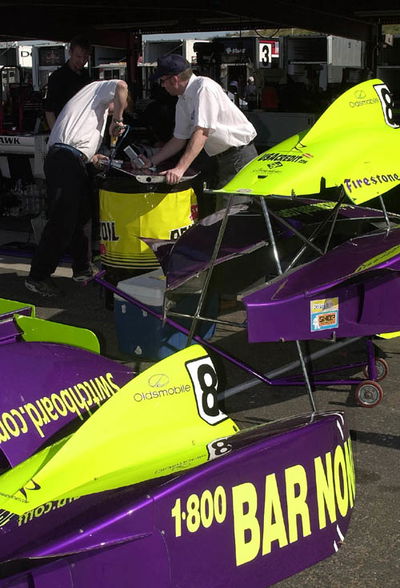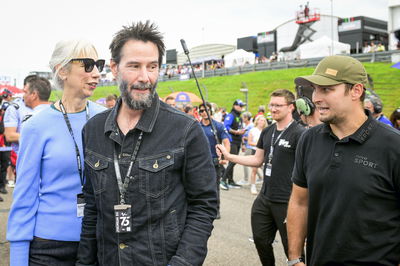Toyota completes first test.
Marlboro Team Penske driver Helio Castroneves helped Toyota Racing Development fine-tune its 2003 Indy Racing League engine during testing Aug. 12-13 at Kentucky Speedway.
Two-time Indianapolis 500 winner Castroneves tested the new Toyota engine with both short- and long-run setups with a Dallara chassis. Toyota is making its debut as an IRL engine manufacturer in the 2003 season.

Marlboro Team Penske driver Helio Castroneves helped Toyota Racing Development fine-tune its 2003 Indy Racing League engine during testing Aug. 12-13 at Kentucky Speedway.
Two-time Indianapolis 500 winner Castroneves tested the new Toyota engine with both short- and long-run setups with a Dallara chassis. Toyota is making its debut as an IRL engine manufacturer in the 2003 season.
"We have eight to ten of these engines that we've been building in rotation," said Lee White of Toyota Racing Development. "We build probably three or four a week for dyno development and virtually every one has been a different spec.
"It's been a very rapid evolutionary process because of time constraints. We've been focusing heavily on performance development because those parts, by the (IRL) rules, have to be submitted by Sept. 1. We're just starting to shift from 80 or 90 percent performance development to something more normal, which is primarily durability development."
Toyota focused its testing energy on the elements of the IRL package that are new to the automotive giant, which has enjoyed success in CART.
"The IRL program is different," White said. "It's a rev-limited format, it's normally aspirated as opposed to turbocharger and is primarily oval-track racing instead of road-course racing. It's a different science.
"We are here primarily focusing on the things we understand the least about, which is the rev limiter, the pit lane crew system. We'll be working some on 'shift without lift,' which is something new for the IRL next year."
Shift without lift involves cutting the engine for a fraction of a second to allow the gears to engage, removing the need for a driver to lift off the throttle.












